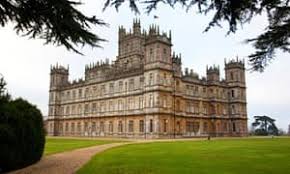Smoking was rife above and below stairs in the era in which the drama is set. So why don’t we see more tobacco on-screen?
The movie of historical TV drama Downton Abbey is set to be a big hit when it reaches UK cinemas in September, but don’t expect a historically accurate representation of smoking in the 1920s. In Downton Abbey, you hardly ever see people light up, except for the occasional sneaky fag smoked by the meanies of earlier episodes, Cora Crawley’s lady’s maid Sarah O’Brien and footman Thomas Barrow. Shirley McLaine, playing Cora’s wealthy American mother, had the odd ciggie too, but she only appeared in the first two episodes of series 3, returning once for a Christmas special.
In reality, smoking was the norm in high society, and below stairs too. But showing life as it was in all its smoky details doesn’t suit our modern aversion to cigarettes on-screen.
Since the 2007 ban on indoor smoking in public places, it isn’t even possible for the actors to smoke real cigarettes when they are working in enclosed spaces. And producers are imposing their non-smoking rules back in time, taking cigarettes out of characters’ mouths.
If you look back at Gosford Park, a film based in a similar historical time in a similar country house setting, and also written by Julian Fellowes, many of the characters do still smoke, but that was aired in 2001, before the ban and attitudes changed.
According to the Center for Disease Control in the US, smoking boomed in the early 20th century for a variety of reasons including the introduction of blends and curing processes that allowed the inhalation of tobacco and the invention of the safety match.
Smoking boomed in the early 20th century
There was also a widespread advertising push to promote cigarettes. More women started smoking in the 1920s thanks to a combination of ads aimed at them and changes in attitude to women’s behaviour and roles. Alastair Bruce, who was in charge of historical accuracy and etiquette on the Downton Abbey TV show, admitted in a Q&A session on GBP Media that accuracy sometimes had to bow to entertainment values. “Well, all entertainment is what we’re trying to create and Downton Abbey must be entertainment first,’ he said. “It’s not a historical documentary. Although I try to put structure in the background which is correct. But it is entertainment. But the moment we stop entertaining we will lose our audience and people want to have a time when they turn that television on for whatever it is they like to watch and just be entertained.”
And cigarettes weren’t the only things that were cut to make Downton Abbey fit in with modern sensibilities. Bruce has revealed that God was also left out, despite the fact that most people in the 1920s were regular church-goers, to avoid alienating today’s viewers who have a range of faiths, or none at all.
He said: “I think that the view was that we’d leave religion out of it, and it would’ve taken extra time too. I suggested a Latin grace, but they decided that was too far, and no one would’ve known what was going on.”
Rob James Collier, who actor who plays Thomas Barrow, is likely to be relieved that smoking has been cut from the movie. Back in 2013, he said he was ‘terrible’ at smoking and only used it for dramatic affect. “I don’t even smoke! If you watch from seasons one to three, my smoking is terrible in the first year. There was a scene in season two where I took it so deep, I said a paragraph’s worth of dialogue and five lines after that smoke was still coming out my mouth.”
Fans of Downton Abbey seem to be generally supportive of the decision to leave cigarettes (mostly) out of the action too. “I don’t actually notice that no one is smoking. I’m not watching it for the smoking, but for the storylines, the fabulous sets and costumes and the characters,” says Nina Drew, 50, a mother of two from Haslemere, Surrey. “I plan to watch the film with my teenage kids and I don’t want them to start thinking that smoking is glamorous and enjoyable.”
